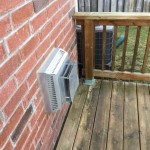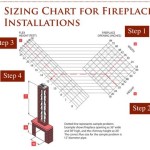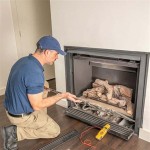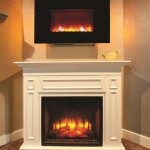Understanding Unvented Gas Fireplaces: A Comprehensive Guide
Unvented gas fireplaces, also known as vent-free gas fireplaces, offer a unique approach to supplemental heating, providing warmth and ambiance without the need for a traditional chimney or venting system. These appliances burn natural gas or propane and are designed to release combustion byproducts directly into the living space. Due to the nature of their operation, a thorough understanding of their functionality, safety considerations, and regulatory requirements is crucial before installation and use.
The primary appeal of unvented gas fireplaces lies in their installation flexibility. Their vent-free design bypasses the significant construction costs and spatial limitations associated with chimney installations, making them suitable for a wider range of homes, including apartments and older buildings where adding a chimney is impractical. This adaptability allows homeowners to introduce a fireplace aesthetic and supplemental heat source to spaces that would otherwise be unable to accommodate them.
However, the elimination of venting brings forth critical safety concerns that necessitate responsible operation and adherence to stringent safety standards. The combustion process produces carbon dioxide, water vapor, and, in small quantities, potentially harmful gases like carbon monoxide. Proper installation, regular maintenance, and the utilization of appropriate carbon monoxide detectors are essential to mitigate these risks.
Key Considerations Before Installation
Before considering the installation of an unvented gas fireplace, several critical factors must be evaluated to ensure safe and compliant operation. These factors encompass both technical requirements related to the appliance and the specific characteristics of the intended installation location.
1. Local Codes and Regulations: The first and most important step is to verify the legality of unvented gas fireplaces in the specific jurisdiction. Many states and municipalities have implemented restrictions or outright bans on their use due to concerns about indoor air quality and potential health risks. These regulations often vary based on factors such as the fireplace's BTU rating, room size, and household composition (e.g., presence of children, elderly individuals, or those with respiratory conditions). Contacting local building code officials is crucial to determine the permissibility of vent-free gas fireplaces in the area.
2. Room Size Requirements: Unvented gas fireplaces rely on adequate room volume to dilute combustion byproducts. Manufacturers specify minimum room size requirements, usually expressed in cubic feet, based on the fireplace's BTU rating. These requirements are designed to ensure that carbon dioxide and other gases remain within acceptable concentration levels. Exceeding the fireplace's BTU rating relative to the room size can lead to elevated levels of harmful gases and pose a significant health risk. Accurate measurement of the room's dimensions, including ceiling height, is essential to determine if the space meets the minimum volume requirements.
3. Oxygen Depletion Sensor (ODS): All certified unvented gas fireplaces are equipped with an Oxygen Depletion Sensor (ODS). This safety device continuously monitors the oxygen level in the room. If the oxygen level drops below a predetermined threshold, indicating incomplete combustion and a potential buildup of carbon monoxide, the ODS automatically shuts off the gas supply to the fireplace. The ODS is a critical safety feature and should never be tampered with or disabled. Regular inspection and maintenance of the ODS are crucial to ensure its proper functioning.
Safety Measures and Maintenance
Maintaining a safe environment with an unvented gas fireplace requires vigilant attention to safety protocols and regular maintenance procedures. Adherence to these guidelines is paramount in mitigating the risks associated with indoor combustion.
1. Carbon Monoxide Detectors: The installation of carbon monoxide detectors is mandatory in homes using unvented gas fireplaces. Detectors should be installed according to the manufacturer's instructions, typically on each level of the home and near sleeping areas. Routinely test the detectors to ensure they are functioning correctly, and replace the batteries as recommended. Understanding the symptoms of carbon monoxide poisoning, such as headache, dizziness, nausea, and shortness of breath, is vital. If any of these symptoms are present, immediately evacuate the premises and seek medical attention.
2. Proper Ventilation: While unvented fireplaces are designed to operate without a direct vent to the outside, some level of ventilation is still necessary to maintain acceptable air quality. Cracking a window or door slightly during operation can help facilitate air exchange and prevent the buildup of combustion byproducts. This practice, however, should not be considered a substitute for adhering to room size requirements and using properly functioning carbon monoxide detectors. The manufacturer's recommendations regarding ventilation should always be followed.
3. Regular Inspection and Cleaning: Regular inspection and cleaning of the fireplace are essential for optimal performance and safety. The burner and pilot light assembly should be inspected for any signs of debris or corrosion. Clean the burner ports to ensure a clean and efficient flame. The ODS should also be inspected for proper functionality. It is recommended to have the fireplace professionally inspected and serviced annually by a qualified technician. This service should include a thorough cleaning, inspection of gas connections, and testing of safety features.
Regulatory Landscape and Environmental Impact
The regulatory landscape surrounding unvented gas fireplaces is constantly evolving due to ongoing concerns about indoor air quality and potential health effects. Understanding the current regulations and the environmental impact of these appliances is critical for responsible ownership.
1. State and Local Regulations: As previously mentioned, the legality of unvented gas fireplaces varies significantly across jurisdictions. Some states have outright bans, while others have specific restrictions based on factors such as BTU rating, room size, and the presence of vulnerable populations. Even in areas where they are permitted, specific installation requirements and permitting processes may apply. Staying informed about the latest regulations in the specific location is essential for ensuring compliance.
2. EPA Guidelines and Standards: The Environmental Protection Agency (EPA) plays a role in setting standards for various types of heating appliances, including gas fireplaces. While the EPA does not directly regulate unvented gas fireplaces in the same way as vented appliances, they provide guidelines and information on indoor air quality and the potential health effects of combustion byproducts. Referencing EPA resources can help homeowners make informed decisions about the use of unvented gas fireplaces and strategies for mitigating potential risks.
3. Environmental Considerations: While unvented gas fireplaces can provide supplemental heating, it is important to acknowledge their potential environmental impact. The combustion of natural gas or propane releases greenhouse gases, contributing to climate change. While the emissions from a single fireplace may be relatively small, the cumulative effect of widespread use can be significant. Exploring energy-efficient alternatives, such as electric fireplaces or vented gas fireplaces with high-efficiency ratings, can help reduce the environmental footprint associated with home heating.
Unvented gas fireplaces offer a convenient and adaptable heating solution, but their safe and responsible operation hinges on a comprehensive understanding of their functionality, safety considerations, and regulatory requirements. By adhering to safety guidelines, performing regular maintenance, and staying informed about local regulations, homeowners can minimize risks and enjoy the benefits of supplemental heat and ambiance. Continuous monitoring of carbon monoxide detectors and awareness of potential health symptoms remains crucial for safeguarding the well-being of all occupants.
:max_bytes(150000):strip_icc()/ventless-gas-fireplaces-4160746-hero-f9d4bdcd9bd446eb84406de306f790ba.jpg?strip=all)
How To Pick Out A Ventless Gas Fireplace

What Is A Ventless Gas Fireplace Experts In Gaithersbutg Md

One6 Vf SÓlas Contemporary Fireplaces

What Is A Ventless Gas Fireplace Pitmon Oil

Vent Free Gas Fireplaces Inserts Stoves Napolis Godby Hearth And Home

Pleasant Hearth Wildwood 24 In Vent Free Dual Fuel Gas Fireplace Logs Vfl2 Ww24dt The Home Depot

Superior 36 Inch Vent Free Gas Firebox Vrt3136 North Country Fire

Artisan 60 Inch Vent Free Linear Fireplace Fine S Gas

Ventless Gas Fireplace Vent Free Modern

What Is A Vent Free Fireplace








